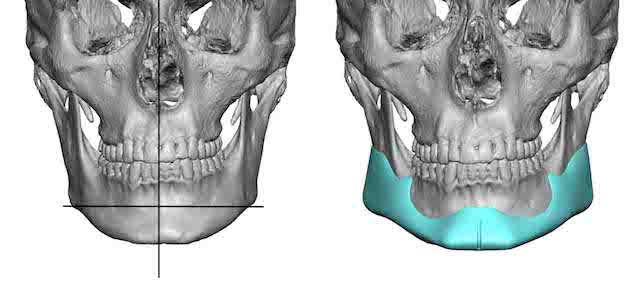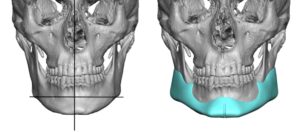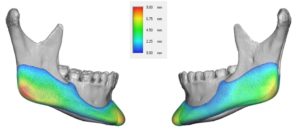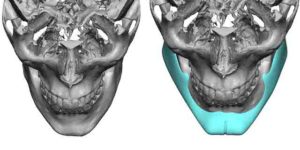Background: The most common aesthetic deformity of the lower jaw is asymmetry. Whether it is very visible or known only to the patient, lower jaw asymmetry is very common and is probably the norm rather than the exception. This is clearly evident in the many 3D CT scans I see where almost everyone has some degree of bony jaw asymmetry. This is not surprising given how the lower jaw develops from paired embryonic arches from each side merging in the middle. It is hard to imagine that such a complex merging process always results in a perfectly symmetric lower jaw.
Many lower jaw asymmetries are minor in nature and are most commonly seen with differences in the vertical length and width of the jaw angles. This is usually no greater than 3 to 5mms which may seem to be slight. But when augmenting the jawline such small amounts of asymmetry become magnified as they become enlarged if they are not recognized and accounted for in the implant design between the two sides. This is one of advantages of a custom jawline implant design.
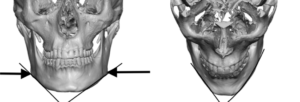
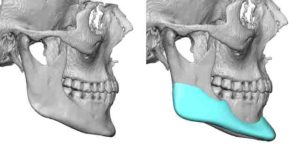
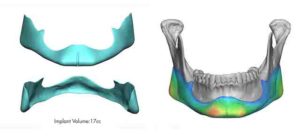
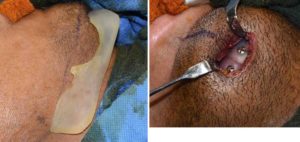
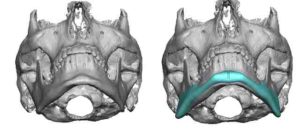
Case Highlights:
1) Asymmetries of the lower jaw are very common which present as chin and jaw angle side differences.
2) A custom jawline implant can be designed to correct the bony asymmetries of the lower jaw.
3) A front to back insertion technique is preferred to maintain the one-piece construct of the implant and to reduce the risk of infection.
Dr. Barry Eppley
Indianapolis, Indiana

